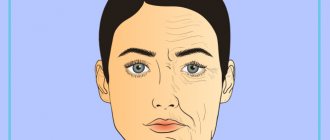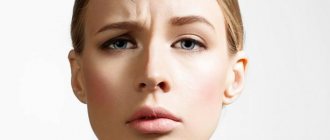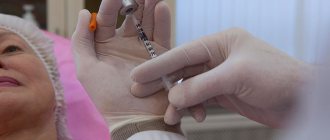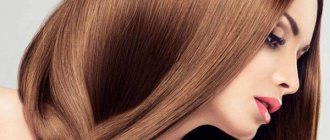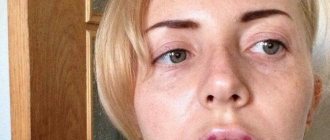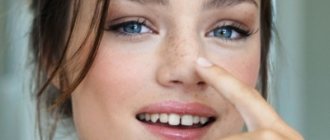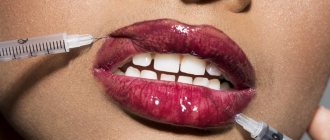Corners of lips and Botox
Without knowledge of muscle anatomy, the doctor will not administer the drug at random. After all, the orbicularis oris muscle alone is equipped with 11 dilators (antagonists), which also include the subcutaneous muscle of the neck. If Botox goes into the wrong muscle, a drooping or distorted mouth will occur.
To activate the muscles that hold the corners of the lips, botulinum toxin type “A” is injected in small doses near the corners. This lifts them up and brings back the “Mona Lisa smile” for more than 6-10 months. More precisely, injections into the area of the corners are not made to raise them, but to stop the process of their lowering. That is, to relax the muscle: eliminate DAO muscle hyperactivity, which contributes to ugly facial expressions, the appearance of unnecessary sublabial-maxillary folds and wrinkles.
What drugs are used
First generation drugs include Botox and Dysport, although they are also effective today.
But over a period of more than 30 years, laboratories around the world have produced many similar drugs under different names, for example Rifinex, Lantox, Xeomin, the properties of which are superior to their predecessors, and the active ingredient in them is the same botulinum toxin type A.
For example, the latest generation drug, Relatox, due to modern production technology and stabilization of the toxin, in comparison with Botox, has shown less reactogenicity (the ability to produce antibodies in our body), a longer duration of effect with a greater degree of smoothing of facial wrinkles.
Complications
If the drug gets into the underlying layers of muscles, it may cause a change in facial expressions during a conversation or when smiling, which is observed in 5% of patients.
The act of swallowing is disrupted when the drug enters the platysma - the neck muscle that moves the corners of the lips and jaw downwards, due to exceeding the dosage or depth of administration. It is difficult to pronounce the sounds “O” and “U”.
Possible topography violation:
- due to the lack of symmetry of injection points;
- when administering the drug without taking into account the different hyperfunction of the muscles on both sides of the mouth;
- when “sleeping” muscles are turned on;
- due to uneven distribution of the product at injection points.
Botox or hyaluronic acid?
The difference between these drugs is that hyaluronic acid is used for filling (lips, cheekbones, chin, etc.). Botox is aimed at interacting with muscles. If there is a need to make fuller lips, it is better to use hyaluronic acid, it will retain its shape longer. Botox is suitable for smoothing the skin. It is better to model an oval shape using hyaluron-based fillers.
Botox on the forehead and between the eyebrows: what should not be done after the procedure for 14 days?
After the most difficult hours after the procedure have passed, the recovery period does not end. It lasts about 2 more weeks. At this time, the toxin exerts its effect, binds to the muscles and paralyzes them, and the skin gradually returns to the desired state. All this time, the risk remains that the result of the procedure will be spoiled.
At this time, direct sunlight and tanning in a solarium are contraindicated. It's not just a matter of ultraviolet light hitting the skin, but also overheating, which changes the distribution of the drug under the skin. Therefore, the beach and solarium will have to be cancelled, and it is advisable to move along the street in the shade, covering your forehead with a hat or bangs.
The treatment area should not be touched with cosmetics, any care products, massage or facial exercises. It is also necessary to follow a diet - avoid large amounts of liquid and salt, which provoke swelling.
How to sleep with Botox? It is advisable to do this on your back so that the pillow does not touch your face. You can go to bed for the first time 5-6 hours after the procedure. It is advisable to get a good night's sleep before it, so that strong yawning or the desire to sleep does not lead to violation of the recommendations in the first 4 hours after the injections.
Botox and sports: reducing stress
There are no contraindications for sports after completion of the rehabilitation period - as soon as 14 days have passed after the procedure, the patient can think about physical activity.
Sports do not affect the distribution of the drug in the muscles after the stated 14 days have passed. Until this point, physical activity should be as minimal as possible. Afterwards, the patient can indulge in breathing exercises, stretching, jogging and training in the gym. But you should be prepared for the fact that the results of the injections will not last as long as you would like.
As for when you can engage in professional sports, the answer is obvious - high-performance sports and Botox are incompatible with each other. Firstly, active physical activity in professional athletes greatly shortens the duration of action of the toxin; in some cases, wrinkles may return within a month. Secondly, the skin irritation reaction intensifies, headaches and other side effects appear.
Recommendations on how to reduce risks
Take seriously the choice of a qualified and competent specialist. Do not give injections at home or from a self-taught cosmetologist.- After the injection, you must refrain from sleep for 5 hours.
- Try not to touch your face with dirty hands for 24 hours.
- Do not tilt your head down for 48 hours.
- Do not visit the bathhouse, sauna or solarium. Do not stay in the open sun for a long time. This condition must be observed for 7 days. We talked about why a bath after Botox is dangerous and the possible consequences here.
- Avoid heavy physical activity for 48 hours (read about sports after Botox here).
- In the evening, reduce fluid intake. Because it can increase swelling.
- Avoid alcoholic beverages for 3 days before and after Botox injection.
- You cannot combine Botox injections with medications that affect blood clotting, antibiotics, analgesics and psychotropic substances.
- Before you start injections, you should familiarize yourself with the contraindications. Botulinum toxin preparations are contraindicated for pregnant and nursing mothers, people suffering from protein allergies, eye diseases, etc.
We invite you to watch a video about recommendations for care after the Botox procedure:
Attention to safety
Unlike many skincare procedures and massages, injection therapy should only be performed by a certified doctor. The success of many manipulations depends on the skills of a particular performer and experience. The areas of the lower border of the face are recognized by cosmetologists as difficult to perform correction with Botox. For a long time, this area was avoided, injecting the toxin exclusively into the more pliable upper parts. Now technology makes it possible to perform Botox manipulations around the mouth, chin, and cheeks. The result of the actions depends on the skill of the doctor.
A certified doctor is always sensitive to the safety of injection procedures, but patients are advised to be attentive to the actions of the cosmetologist. Taking into account the human factor, no one is immune from errors. The patient should think about preserving his health.
It is recommended to request a license from your doctor to perform injection procedures. The cosmetologist must maintain sterility:
- use of antiseptics;
- manipulation of syringes from sealed packaging;
- exclusion of direct communication with the street (open windows);
- office visit by staff in a clean medical facility. clothes.
The doctor must open the ampoule with the drug in front of the patient. It is recommended to request the packaging from your cosmetologist for examination. The container is not damaged, the expiration date corresponds - it is permissible to continue manipulations.
Leave feedback
-
- 19.03.2019
IngaTwice a year I do Botox injections in the area around the eyes and between the eyebrows. I started after I was 35, now I do it to maintain the effect. The result of rejuvenation is colossal! No one even suspects my procedures, since facial expressions remain natural. Here, many thanks to the professional doctors and cosmetologists of the clinic. The consultations are very helpful and the injections are great!
READ MORE
25.06.2018
Svetlana
I have been taking care of my face for a long time, periodically do biorevitalization and photorejuvenation of the skin, and based on my personal experience, I believe that Botox injections are the first procedure that every woman should do after 30 years. One procedure lasts me 7-8 months. The result is excellent, wrinkles on the forehead and around the eyes are smoothed out, they simply don’t exist! I'm in love with Botox!
READ MORE
05.06.2018
Elya
I am very happy that cosmetologists have developed such an effective way to combat wrinkles. I recommend to all!!! Very convenient, fast, and effective! I don’t always see the same cosmetologist, but I want to note that all the cosmetologists in your clinic are experienced, attentive and excellent professionals!
READ MORE
all reviews >
Botox procedure for face
Botox injections are performed under completely sterile conditions. They cannot be done at home - it is possible to introduce infection into the skin puncture sites. In addition, storing botulinum toxin requires special conditions: the slightest rise in temperature and injection can cause serious illness.
Injection process
The thickness of the needle for the procedure does not exceed 0.3 mm. This is slightly thinner than a human hair.
How are Botox injections performed for the face in the frontal area:
- Before the session, the skin is completely cleansed of cosmetics and secretions. To do this, it is treated with an alcohol-free disinfectant solution.
- Conventionally, the forehead is divided into several areas: the central point, the sides, the hairline, and the lower zone. The central zone is worked out first.
- The cosmetologist grabs the skin in the middle of the forehead. The result should be a thin fold (up to 5 mm wide). The needle is inserted into it all the way. The piercing occurs literally to the bone.
- As soon as the needle rests on the bone, the technician releases the skin and begins to slowly inject the solution.
- If after removing the needle there is bleeding, then it is stopped with a simple cotton pad soaked in Chlorhexidine.
- The next injection point is located at the same level as the previous one. The action is completely repeated: the fold is clamped, the needle is inserted into it until it stops, and then the injection is made.
- Depending on the number and complexity of wrinkles, 6 to 8 injections are required on the forehead.
Sometimes lumps form at the injection site. This is kind of a side effect. Accumulations of botulinum toxin resolve on their own over time.
How does a Botox lift work? Injection diagram
The procedure is done in several steps:
- The face is freed from cosmetics and impurities. Then the surface is disinfected to prevent tissue infection through the skin injured by the injections.
- Markings are applied along which the injections will be carried out. The points are determined so that the injection of the drug relieves tension from specific muscles. If the forehead is being corrected, injections are made above the eyebrows and in its center, sometimes in several lines. Three injections are needed to eliminate frown lines between the eyebrows. To remove crow's feet, the drug is injected into the outer areas of the eyes.
Aligning the line of the mouth involves 3 injections on its sides just below the corners. When correcting the back of the nose, they are done vertically on its right and left sides. Injections above the upper lip can remove folds in this area. And if you inject the drug just below the wings of the nose, you will be able to smooth out the nasolabial furrows. The neck is corrected with injections in several rows along the muscle cord.
Botox injection points
- After determining the scheme and volume of the drug, an anesthetic is applied to the skin. It comes in the form of a cream and takes effect in 20-30 minutes.
- The specialist gives injections using disposable syringes. When the drug is injected into each area, the patient is asked to make a face, using certain muscles.
- Upon completion of the last injection, the skin is treated with an antiseptic. To reduce natural swelling, apply a cold compress to the face for a short time.
To learn how the Botox injection procedure works, watch this video:
What is Nefertiti lifting
Sculptures and images of the Queen of Egypt, Nefertiti, delight not only ordinary tourists, but also plastic surgeons from different countries. Despite the fact that they depict the queen already in adulthood, there are practically no age-related changes; it seems that the tissues of the face and neck are supported by an invisible frame.
All the structural vectors of the Egyptian queen’s face are directed upward, they are not distorted by age, as you can see, the corners of her lips are raised, the ideal contour of her chin has been preserved, and her cheekbones remain high. Such youthful facial features for an adult woman delight many beauty experts.
The Nefertiti lift is a non-surgical lift of the neck and face contour in just 1 procedure, as the video below will tell you about:
Concept and essence
In every person, muscles act as an invisible frame; they prevent soft tissues and skin from sagging, and they form a certain contour of the face. The muscular frame consists of two types of muscles:
- Elevators. They lift the tissue up.
- Depressors. These muscles are responsible for lowering the facial tissues.
They are in close relationship with each other; if the activity of one group is weakened, the second will immediately begin to work harder. If you weaken the depressors, you can stimulate the elevators, which will strongly interfere with gravitational ptosis.
A famous plastic surgeon from France took this structural feature of the epidermis into account and began using Botox injections only in the lower part of the face. This is a new approach to restoring the contour of the face, usually injections are made into the outer corners of the eyes, forehead and bridge of the nose, and according to Dr. Levy’s method, the lower oval of the face and neck are involved. In his opinion, this is the only true remedy that can rejuvenate a person for a long time.
His innovative technology was called the Nefertiti Lift, since after it the lower jaw is strengthened, the neck becomes toned, and the oval of the face returns to its previous shape. The procedure proposed by Dr. Philip Levy, as it were, “reconfigures” the work of the muscles, changing their balance, while a clear contour is formed, and the nostrils and corners of the mouth are raised, which is very important for creating a younger-looking profile. Dr. Levy has been conducting all kinds of experiments to restore youth for more than 15 years, he has been studying the effect of hyaluronic acid, Botox and laser on the skin, and among his new developments, the “Nefertiti lifting” is in great demand.
The essence of face oval lifting is to deliver Botox-Dysport to the right places, where it blocks the release of the mediator acetylcholine, it brings the muscles into a contracted state and stimulates face lifting.
Photos before and after Nefertiti lifting
Kinds
There are two options for performing the procedure, one using Botox, and the other using elastic threads.
- In the latter case, a small operation is envisaged, during which 2 cm long incisions are made behind the ears, this happens under local anesthesia. The doctor inserts threads into the incisions; they penetrate like invisible webs under the skin in the area of the chin and neck. The thread is wound on one side, and its edges are shown on the other, which are tied, determining the desired tension. The threads dissolve on their own over time.
- Botox is a non-surgical procedure that involves injections into specific areas.
Comparison with Aptos
In addition to Nefertiti lifting, there are other methods for restoring youthful skin, which, in addition to Botox, use threads. Thus, the procedure using special self-absorbable Aptos threads is especially popular. These are special synthetic threads, along the entire length of which there are small notches, they are made at different angles. Two months after they are inserted, a frame of connective tissue is created under the skin around them, thanks to which wrinkles are smoothed out and the skin is tightened.
The same threads can be used to perform the Nefirtiti lifting procedure; they can maintain the facial contour for many years, and after their final resorption, the procedure can also be painlessly repeated.
How is botulinum toxin treatment performed?
The drugs used for treatment are Botox, Dysport, Xeomin, which contain botulinum toxin in very small quantities. This is enough to block part or all of the function of a small muscle or interrupt the connection between a nerve and an overworking sweat gland, but not enough to cause harm to the entire body.
Where is Botox injected? If we are talking about eliminating facial wrinkles, then the drug is injected subcutaneously or intramuscularly, if local hyperhidrosis is being treated, that is, increased sweating, then Botox is injected intradermally, forming the so-called “lemon peel”.
Before injections, tests are carried out, which will be described below; the injection site is marked with a special non-toxic washable dye. The injections themselves usually require several, depending on what effect you want to achieve and on what area.
Before administering the drug, the skin is lubricated with a gel containing a local anesthetic so that the procedure is well tolerated. The injections themselves are made with insulin syringes with very thin needles.
How does it affect wrinkles and where is it injected?
The Botox injection technique should be worked out by the specialist you contacted. It is advisable that such injections are performed not by a cosmetologist, but by a plastic surgeon who perfectly knows the anatomy of the facial muscles, in order to prevent possible side effects from the drug as much as possible.
Botox injection points should be applied after you have discussed with your doctor exactly what concerns you and what effect you would like to achieve. After this, the doctor outlines a plan for himself, which muscle needs to be relaxed and how much to achieve the desired result.
Then a study such as electromyography (EMG) is carried out: the target muscle is asked to tense (the doctor says exactly how), and when the electrode reaches the most “sore” place of this muscle, the device gives a signal, and a mark is applied to this place in order to then carry out the injection.
Based on the strength of the signal, the doctor also determines what dose of the drug to inject at this particular point. Each mark is the center of a circle with a diameter of 1-1.5 cm, into which it is no longer possible to inject; this is the area of diffusion of the drug.
For example, if you do not like the “angry” expression on your face, injections are made in the area of the glabella, in the so-called pride muscle (it frowns the eyebrows) and the corrugator muscle. This area usually receives 7.5-25 units of the drug.
The injection must be extremely precise in order to completely cover this area and not get on the muscle (the drug tends to spread) that raises the upper eyelids, otherwise you will have to walk with half-closed eyes for 2-4 months.
If you do not like horizontal folds on the forehead, marks with a diameter of 1-1.5 cm are drawn again. Several rows of injections under EMG control may be needed here. Crow's feet around the eyes are corrected with injections of a less concentrated drug.
In this case, how is Botox done? At a distance of about 1 cm from the outer corner of the eye, one mark is made, the second is above the first, where folds form when the eyelid is closed, the third is below the first and where the folds are. 7.5-15 units are injected into this area on each side.
Botox also helps correct nasolabial folds, neck muscles, and wings of the nose. Wrinkles around the mouth and on the cheeks do not respond well to the drug; those on the chin do not respond well.
After administering the drug, you can immediately go home or to work, the effect will not yet be noticeable. It will occur only 2-12 (on average 5-7) days after the procedure. On this day, you should not wear makeup, bend over (so that the drug does not spread), or drink alcohol (Botox is inactivated). You should try not to use your facial muscles for at least a day, that is, try not to be exposed to strong emotions.
How to inject Botox correctly according to the time interval? Preferably once every six months, when the effect of the previous administration wears off. It is also best if you want to correct several areas on your face at once, to do it at once, since Botox injected into another area after a short period of time may require more of the drug - the so-called “addiction”.
If you notice that a muscle has become too relaxed, consult your doctor and undergo procedures such as microcurrents and lymphatic drainage massage so that the effect of Botox in this area goes away faster than in 2 months.
Correction of facial oval
When Botox or Disport is injected into the platysma and muscle depressor of the corners of the mouth in 40-55 year old patients, it is possible to shape the oval of the face, eliminate jowls, and define a clear border of the lower jaw. This procedure is called a Nefertiti lift. It is effective in the presence of barely noticeable subcutaneous fatty tissue and sagging tissue. If the skin is very flabby, there is a lot of fat, there is a formed double chin, then after 45 years, correction with butolotoxin preparations will be ineffective.
The average dose for a clearer facial oval line is 10-18 units. The procedure can also eliminate the appearance of a “square-shaped” lower jaw due to frequent and strong clenching of the teeth to the point of swelling of the jaws. It will soften the contours of the face and relieve pain discomfort due to dysfunction of the temporomandibular joint (TMJ). This correction is carried out in small doses over 1-3 or more months.
Elimination of wrinkles around the lips
For many, it becomes a tragedy to expose the gums while laughing, which is called a gingival or gingival smile. Because of the proximity of the muscles and the risk of diffusion into the wrong muscle tissue, many doctors, especially inexperienced ones, have previously avoided this area. But now, in skillful hands and with the proper dosage, Botox solves problems not only with exposed gums, but also with sadness wrinkles (labial chin or “marionette lines”) due to increased muscle tone.
To eliminate pronounced perpendicular (“purse-string”) wrinkles above the upper lip, it is necessary to administer 1-4 doses of the drug using the “mesobotox” technique. The procedure is prescribed for active smokers and those with severe photoaging. So that patients can avoid straining when stretching their lips, close their lips tightly and calmly drink through a straw, they need to start with minimal doses of Botox or replace it with products containing elastin, collagen and hyaluronic acid.
Cost of BOTOX injection
| Cost in rub. | |
| Consultation with a cosmetologist* | 2 000 |
| Zone | Cost in rub. |
| Forehead | 5 000 |
| Between the eyebrows | 5 000 |
| Eye area | 5 000 |
| Correction of asymmetry of lip angles | 5 000 |
| Correction of purse-string wrinkles | 320 (1 unit) |
| Correction of neck wrinkles (correction of platysma muscle) | 320 (1 unit) |
| Correction of neck wrinkles (correction of horizontal rings of Venus) | 320 (1 unit) |
| Correction of masticatory muscles (correction of facial volume) | 6 000 |
* - when undergoing the procedure on the day of consultation, the consultation is free of charge
What defects of the lower part of the face can be corrected by Botox injections into the chin?
Most often, Botox is injected into the chin to reduce its lumpy appearance (the so-called “cobblestone” or orange peel effect).
In some people, when the mental muscle is tense, irregularities appear on the skin. Botox injections reduce this lumpy appearance.
In young patients, this procedure is very effective, but in older patients it often requires combination (not simultaneous) with filler injections.
Injections of botulinum toxin into this area also allow:
- Reduce the severity of the labiomental fold or completely eliminate it;
- Remove a double chin if its appearance is not associated with the deposition of excess fat;
- Strengthen the effectiveness of marionette wrinkle removal measures;
- Reduce the severity of nasolabial folds;
- “Raise” the commissures of the mouth.
It is interesting that to reduce the severity of the nasolabial and commissures, injections are made not into the chin itself, but near it: into the muscle that depresses the angle of the mouth. The injection point for the drug is in this case either on the puppet line itself or near it.
To some extent, injections near the chin into the orbicularis oris muscle can reduce the severity of radial perioral wrinkles, including those located above the upper lip. However, in this case, the procedure is additional to injections in the area above the lip.
Also, when injecting into the orbicularis oris muscle under the lower lip (as well as above the upper lip), the effect of some inversion and exposure of the red border of the lips is achieved. They become fuller and more pronounced, which is beneficial for patients with very thin lips.
Botox injections into the orbicularis oris muscle help thin lips appear fuller.
Usage diagram
Cosmetologists have developed a standard list of muscles and a scheme where Botox can be injected, including on the face, in order to achieve certain results or solve standard problems.
For eyebrows
Problem: forehead wrinkles, raised eyebrows.
Injection scheme: There are many different techniques for Botoxing the forehead muscles, but the most popular of them is the V-shape, which usually requires 12-20 units of Botox, which units we will describe a little later.
To smooth out the eyebrow wrinkles, 8-16 units are administered at 4-6 points.
Read about Botox for eyebrows here.
For the face – maintaining shape
Problem: Deformed shape of the face and chin, uneven skin.
Administration regimen: Administer 4-6 units. intramuscularly into two symmetrically located skins on the chin, as well as into the cheekbones to maintain shape. To get rid of wrinkles on the entire face, Botox is injected into 20-25 points - near the mouth, eyes, forehead and nose, chin.
You can find out more about Botox for the face here.
For the eyes – getting rid of expression wrinkles
Problem
Scheme of administration: At the outer corner of the eye, 6-10 units of Botox can be injected both subcutaneously and intradermally - these two methods will be discussed later.
In the lower eyelid area, injections are carried out only intradermally, using a minimal amount of injected Botox - the skin there is delicate and requires maximum attention.
To raise the eyebrow, 6-10 units are injected above the eyebrow line, closer to the inner edge of the eye.
About Botox for the eye area is written in our material.
For nose and mouth
Problem: Tight muscles in the nose and around the mouth.
Administration scheme: The nasal muscle is blocked by injecting 1-2 units of botulinum toxin into 1-2 points. Perioral muscles - administration of 1 unit. Botox in 4 points above the upper lip and two points under the lower lip.
We wrote in detail about Botox in the nasolabial folds here, and here you can learn about Botox on the lips.
Neck area
Problem: unnatural neck shape, “turkey cords”.
Administration regimen: Administer 2 units. on both sides of the muscle cord at a distance of 2 cm between the injection sites.
If a cosmetologist or doctor injects more Botox into this area than necessary, this can provoke a violation of the act of swallowing - that is, it will be difficult for the patient to eat and swallow saliva.
It is divided into two stages - in the first, a minimum dose of the drug is administered, the rest - two weeks later.
You will find more details about neck Botox in a separate article.
We invite you to watch a video about botulinum toxin injection techniques:
How to administer
Without focusing on the folds, measure the distance from the corner to the edge of the lower jaw and mark a third of the height. They move to the side of the muscle (from the center) that lowers the lower lip, “turning off” it and thereby preventing distortion of the lip line.
The drug is administered superficially, without deepening. That is, inside the skin, since DAO is located directly under the skin, on top of a multi-layered “sandwich” of muscles that Botox should not reach. Botulinum toxin is administered in a dose of 1-2 units. or Dysport – 3-5 units. from each side. The final correction with the addition of a small amount of the product is carried out after 2 weeks.
Factors that prolong the effect of botulinum toxin
There are also drugs that enhance the effect of botulinum toxin. For example, taking some antibiotics (aminoglycosides, macrolides, spectinomycins, polymyxins, tetracyclines) while visiting a cosmetologist for an injection can lead to an overdose: 100 units of botulinum toxin will give the effect of 150, and instead of moving facial expressions, the patient will receive a “stony forehead.”
In the United States, the drug Zytaze is commercially available to increase sensitivity to botulinum toxin. It contains zinc and phytase, but when these components are taken separately (for example, in the form of vitamins), a prolonged effect is not observed. Zitaza is not sold in Russia.
Statistics say that with age, sensitivity to botulinum toxin increases. Approximate formula: after 50-55 years, the dose is halved. This is a classic approach; in practice, everything is decided individually.
Precautionary measures
Injection therapy for wrinkles has many contraindications:
- exacerbation of common, chronic diseases, oncology;
- pregnancy, lactation;
- neuromuscular disorders;
- blood diseases;
- somatic disorders;
- endocrine diseases;
- allergy to botulinum toxin drug.
There are various negative consequences:
- gastrointestinal disorder (nausea, problems with the stomach, intestines);
- difficulty breathing, swallowing;
- change in skin sensitivity (numbness, soreness).
If the condition of no contraindications is met, then such manifestations are minimized. An experienced doctor must conduct a detailed conversation
It is also important to correctly calculate the required dosage. Only a competent cosmetologist can do this.
Excess has a negative impact on well-being and causes external undesirable consequences:
- asymmetry - lowering, raising, curvature of individual parts;
- unplanned diffusion of the toxin into nearby muscles, tissues, blood;
- violation of important functions - breathing, swallowing, blinking.
All of the above is the work of an amateur. A professional doctor with experience will not allow such consequences. The cosmetologist always suggests injecting a new patient with a smaller dosage of the drug, observing the individual reactions of the body. Subsequently, it is permissible to inject the toxin or increase the number of units next time.
Harm of injections to the body
There are categories of people who are afraid to use Botox injections. Basing their fear on the toxicity of the substance, suspicious individuals refuse to intervene and try to intimidate others.
Botulinum toxin is indeed similar to what is produced by tetanus bacteria. The doses used by doctors are unable to cause botulism, which is dangerous for the body.
The amount of a substance leading to toxic damage is considered to be 900 units administered at a time. The maximum dose for a single procedure is 500 units for women, 600 units. - for men. The average one-time amount of botulinum toxin for 1 procedure rarely exceeds 300 units.
Botox preparations include a specially purified active ingredient. Various components act as additions that facilitate the action and stabilize the work. The composition of any drug is carefully selected, the effect of the substance is tested, and any deficiencies that are identified are corrected. Manufacturers of botulinum toxins are studying reviews from cosmetologists and patients. Drugs are improved from time to time. Most botulinum toxins have a low tendency to provoke allergies.
Resistance (the formation of antibodies to the active substance), leading to the body's immunity to the effects of Botox, occurs in rare cases. This requires regular administration of the drug in large doses (300–500 units) and frequent repetition of procedures (interval less than 2 months). Even if Botox does not work, you cannot immediately repeat the procedure. The possibility of addiction to botulinum toxin is not noted, but cosmetologists do not recommend gradually increasing the amount of the administered substance.
Adverse reactions when administering botulinum toxin are minimal if the condition of no contraindications is met, the doctor uses the correct administration technology, and the dosage is calculated correctly. To minimize unforeseen consequences, it is important to have a detailed conversation with the cosmetologist before the procedure and strictly follow the doctor’s instructions.
Result
Visible results appear 7-10 days after the procedure. It will last 4-6 months, then the procedure will have to be repeated.
The relaxed chin muscle lowers the skin stretched over it, so the wrinkle under the lower lip disappears. If the fold is particularly deep and resistant to botulinum toxin, it is filled with fillers.
Also, due to the fact that the muscles relax, a person is not able to strain them for some time. Lumps and irregularities no longer appear, since the movement of muscle tissue in this area after injections is impossible.
It is worth remembering that the result appears only when wrinkles are formed due to muscle tension. The procedure will not cope with age-related sagging or wrinkles due to dry skin.

